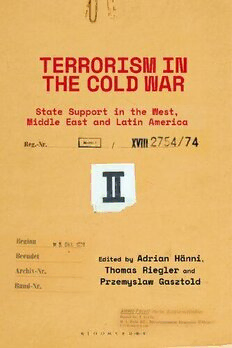
Terrorism in the Cold War: State Support in the West, Middle East and Latin America PDF
281 Pages·2020·8.161 MB·English
Most books are stored in the elastic cloud where traffic is expensive. For this reason, we have a limit on daily download.
Preview Terrorism in the Cold War: State Support in the West, Middle East and Latin America
Description:
Accounts of the relationships between states and terrorist organizations in the Cold War era have long been shaped by speculation, a lack of primary sources and even conspiracy theories. In the last few years, however, things have evolved rapidly. Using a wide range of case studies including the British State and Loyalist Paramilitaries in Northern Ireland, as well as the United States and Nicaragua, this book sheds new light on the relations between state and terrorist actors, allowing for a fresh and much more insightful assessment of the contacts, dealings, agreements and collusion with terrorist organizations undertaken by state actors on both sides of the Iron Curtain.This book presents the current state of research and provides an assessment of the nature, motives, effects, and major historical shifts of the relations between individual states and terrorist organizations. The articles collected demonstrate that these state-terrorism relationships were not only much more ambiguous than much of the older literature had suggested but are, in fact, crucial for the understanding of global political history in the Cold War era
See more
The list of books you might like
Most books are stored in the elastic cloud where traffic is expensive. For this reason, we have a limit on daily download.
